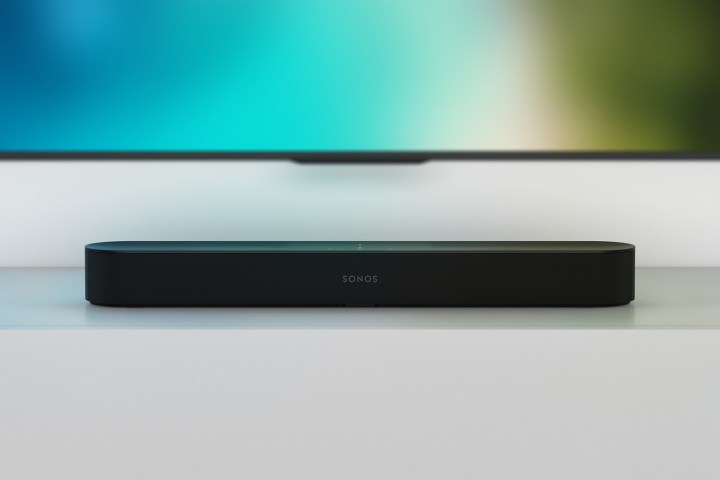
Update: It sounds like a Sonos, but the Beam can pull off a trick none of its siblings can. Read our full Sonos Beam review to find out more.
Sonos unleashed its latest speaker product, the Sonos Beam, at a special event in San Francisco today. Fashioned as a compact soundbar, Beam will support Amazon’s Alexa at launch, with the promise of Google Assistant and Apple AirPlay 2 support coming this July. The Beam is available for pre-order now and will be hitting store shelves July 17 at $400.
The Sonos Beam is designed to be everything other smart speakers aren’t. Based on its list of features, along with Sonos’ propensity for designing stellar-sounding speakers, there’s a very good chance the Beam will dance circles around Apple’s HomePod and offer a premium sonic experience for Alexa fans disappointed with their Echo speakers’ sound quality.
Much of what makes the Sonos One such an appealing smart speaker can also be found in the Beam, but the Beam is designed around a grander home entertainment experience that pulls in your TV and video streaming devices for the ride. The speaker looks like a compact soundbar and is armed with an HDMI ARC connection to connect with a TV and other audio/video sources. What it does with that HDMI connection is a bit different, though. By pairing its Amazon Alexa capability with HDMI ARC (here’s an explainer), the Beam is able to control a TV’s volume with voice commands — that’s something Amazon’s own equipment can’t do. The Beam can also launch programming through a connected Amazon Fire TV device. For example, saying, “Alexa, play ‘Coco,'” would launch the Disney Pixar film on a Fire TV and pump the sound through the Beam.
Though Sonos didn’t mention it, it’s possible that the Beam could pull off similar tricks with Google Assistant controlling a Chromecast or Android TV. And with AirPlay 2 capability, Apple fans will be able to play music and podcasts from their devices or by using Siri. Apple TV 4K integration could also be a future possibility.

As smart as Beam appears to be, it’s a Sonos speaker first, and that’s what differentiates it from all of its competition. Sonos says the Beam was “tuned by a team of world-class acoustic engineers collaborating with leading sound experts from the worlds of film, music and television.” Based on our experience, we’d expect the Beam to produce highly refined, detailed, and enthralling sound for both TV and music. The speaker is armed with four house-built elliptical woofers, three passive radiators, a single tweeter, and five Class-D digital amplifiers, one for each driver. Working together, these speakers should produce excellent fidelity, given Sonos’ prior offerings. Sonos promises crystal-clear dialogue and a wide soundstage that belies its tiny footprint.
The speaker is armed with four house-built elliptical woofers, three passive radiators, and a single tweeter.
Enhancing the voice control experience will be a five-microphone array and Sonos’ own noise-canceling technology, which should allow users to execute voice commands and have them heard even if the speaker is blasting out the soundtrack to the latest blockbuster.
The Beam, available in black-and-white fabric with matte finishes, is low-slung and measures just 25.6 x 3.94 x 2.70 inches, making it a suitable speaker for just about any environment without getting in the way of even stand-mounted TVs. Along with the HDMI ARC port on the back, users will get an Ethernet port and Wi-Fi connectivity. Sonos didn’t say so, but hints indicate the Beam may be able to handle high-resolution audio formats. It is unlikely the speaker supports HDMI 2.1 out of the box, but it is possible it could through a firmware update in the future, opening up the opportunity for eARC compatibility.
While the Sonos Beam is the first speaker from the company to blend a soundbar with smarts, it will still play with Sonos’ entire ecosystem. Users can add a couple of Sonos One or Sonos Play:1 speakers as surround channels and a Sonos SUB for enhanced bass, if desired.
More can be learned about the Sonos Beam and pre-orders can be placed right here at Sonos’ website.



